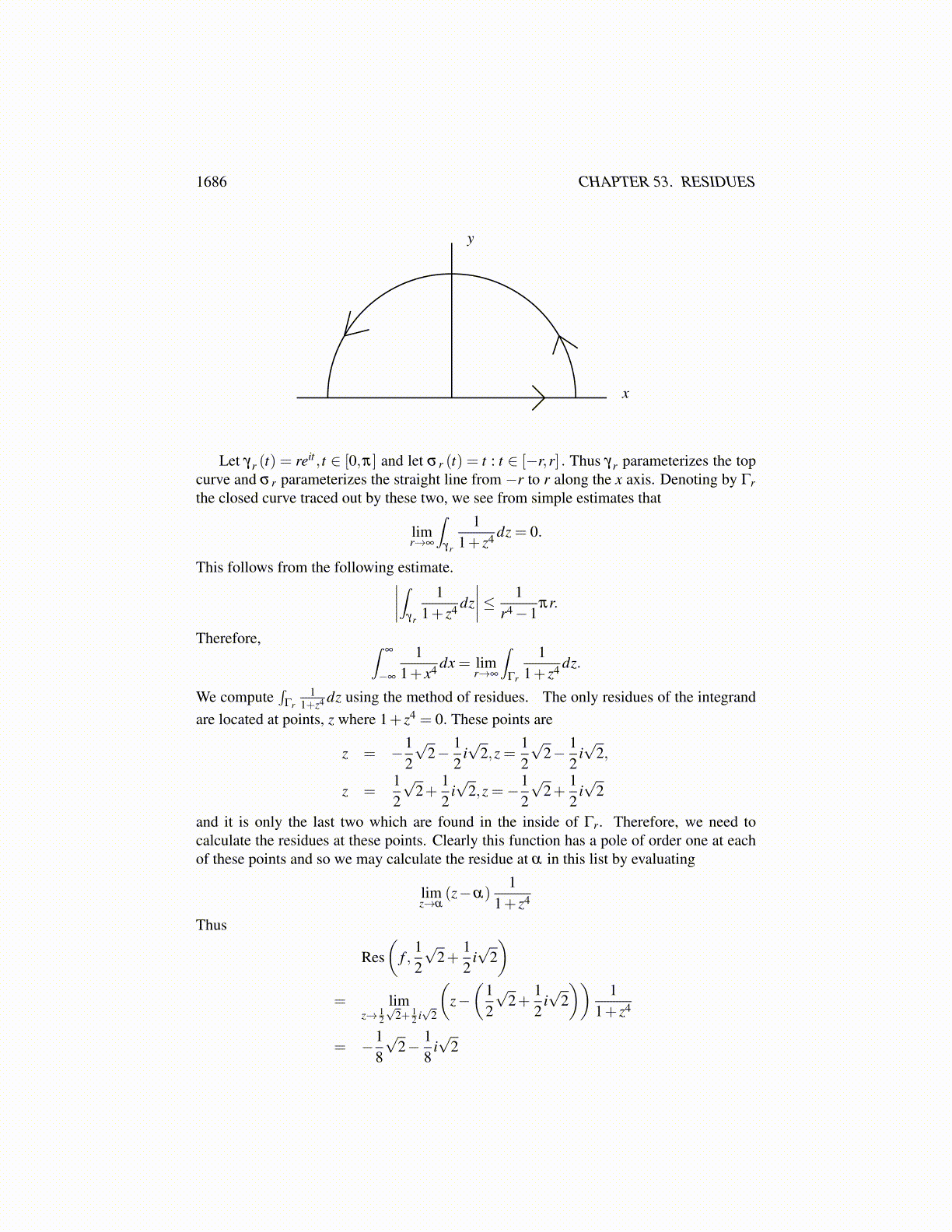
1686 CHAPTER 53. RESIDUES
Therefore, by Lemma 53.2.3, for any r ∈ (R1,R2) ,
f (z) =∞
∑n=0
(1
2πi
∫γr
f (w)
(w−a)n+1 dw
)(z−a)n+
−1
∑n=−∞
(1
2πi
∫γr
f (w)
(w−a)n+1
)(z−a)n . (53.2.9)
and so
f (z) =∞
∑n=−∞
(1
2πi
∫γr
f (w)
(w−a)n+1 dw
)(z−a)n .
where r ∈ (R1,R2) is arbitrary. This proves the existence part of the theorem. It remains tocharacterize an.
If f (z) = ∑∞n=−∞ an (z−a)n on ann(a,R1,R2) let
fn (z)≡n
∑k=−n
ak (z−a)k . (53.2.10)
This function is analytic in ann(a,R1,R2) and so from the above argument,
fn (z) =∞
∑k=−∞
(1
2πi
∫γr
fn (w)
(w−a)k+1 dw
)(z−a)k . (53.2.11)
Also if k > n or if k <−n, (1
2πi
∫γr
fn (w)
(w−a)k+1 dw
)= 0.
and so
fn (z) =n
∑k=−n
(1
2πi
∫γr
fn (w)
(w−a)k+1 dw
)(z−a)k
which implies from 53.2.10 that for each k ∈ [−n,n] ,
12πi
∫γr
fn (w)
(w−a)k+1 dw = ak
However, from the uniform convergence of the series,
∞
∑n=0
an (w−a)n
and∞
∑n=1
a−n (w−a)−n